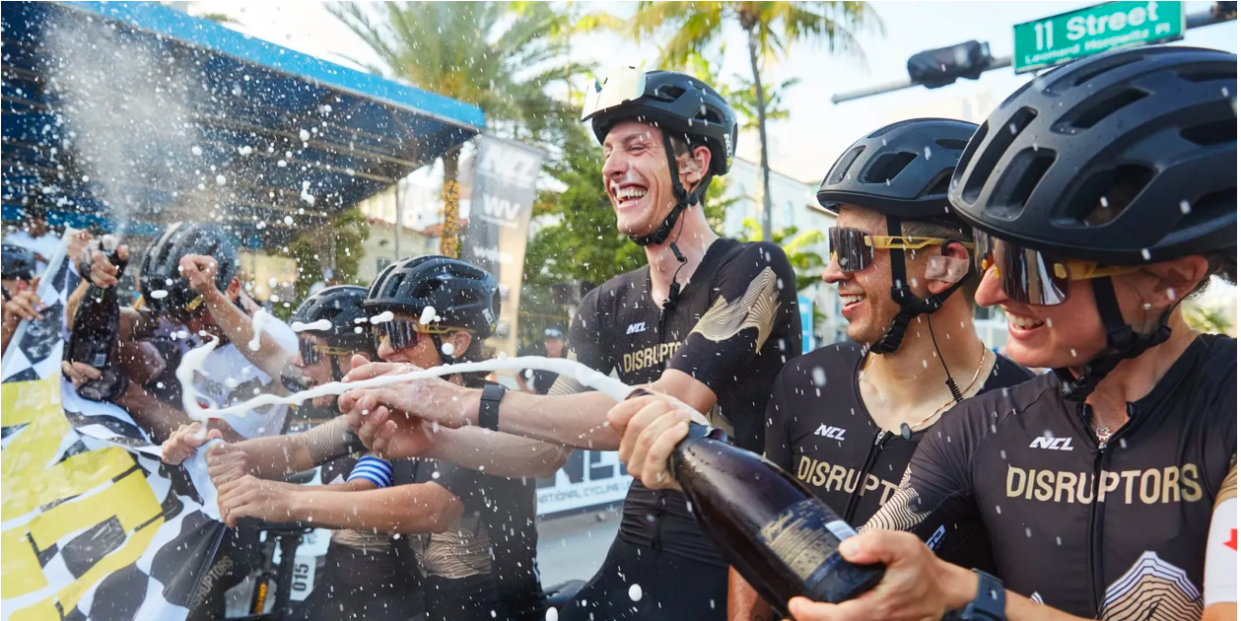So, How Does The NCL Work, Anyway?

- Oops!Something went wrong.Please try again later.
- Oops!Something went wrong.Please try again later.
- Oops!Something went wrong.Please try again later.
Now that the first weekend of the new National Cycling League is in the books, we can start to dissect the format, to form opinions, even to pick favorite teams.
But before we get into all of that, what exactly is the National Cycling League?
The NCL is a new professional cycling league that is backed by a roster of high-profile investors that includes NBA star Bradley Beal, former pro football player Emmanuel Acho, and current NFL players Jalen Ramsey, Casey Hayward, Derwin James and Kevin Bayard.
The league was envisioned and created by entrepreneur Paris Wallace and sports mega agent Daivd Mulugheta, all with the aim of reimagining what American bike racing can and should look like.
“I wanted to reduce the knowledge barrier of becoming a fan by adding a scoreboard and creating a league structure that mimics most other professional sports,” Wallace said in a statement. “I also wanted to reduce the time investment by making it shorter, faster, and more action packed.”
In the NCL, the racing itself mixes the high-speed excitement of criterium racing—perhaps the most popular style of road racing in America—with a points-based format that runs throughout the entire race.
Whereas traditional bike races award the racers who cross the finish line first, the NCL format consists of what amounts to a race on each and every lap.
The rider crossing the line first on each lap gets three points for their team; the second-place rider nets two; the third pace rider scores one. Those points are tripled on the final lap, with first scoring nine points, second six, and third three.
In other words, it’s not about who gets from start to finish the fastest. It’s about how many points a team can rack up during the race.
Another major element of the NCL is how it bakes the promotion of women’s racing right into the format itself. That is to say, each team is composed of two halves; one men’s team and one women’s team. The women race first, followed by the men.
Once each side of the team races for thirty laps, whichever team (both men’s and women’s scores aggregated) has accumulated the most points after sixty laps wins.
Another unique element of the NCL format is the idea of in-race substitutions, as each team is permitted to sub riders into and out of the race until there are five laps remaining. From there until the finish, the racers are locked onto the course.
The NCL’s inaugural season is four races long. The first race on April 8th in Miami Beach was dominated by the Denver Disruptors. Racing will heat up toward the end of summer, though, with races in Denver, Atlanta, and Washington DC on August 13th and 20th, and September 17th, respectively.
Another major element NCL founders are hoping will entice racers and fans alike is the cold-hard-cash rewards that come each race weekend.
Teams winning a race walk home with $7,500. Second- and third-place teams earn $5,000 and $4,000 respectively. The other seven teams split smaller cuts of the overall $30,000 purse.
The season-long winner will earn an additional $45,000, the biggest chunk of the $130,000 purse that all of the teams will split after the four races.
Any team who wins three of the season’s four races will take home a $100,000 bonus. And should the Denver Disruptors complete a season-long, four-race sweep, they’ll win $700,000.
Whether or not the National Cycling League is built to last remains to be seen. It’s certainly an exciting format and the money is there to have a real go at making the league a regular fixture. Not to mention that it’s America’s first sports league to be majority-minority and female owned.
But if the idea is to reach beyond cyclists and fans of bike racing, the league needs to find another broadcast partner beyond GCN+, where all races will be streamed this season. Otherwise, they’re shouting into an echo chamber.
However, an American-based racing league that approaches bike racing with an open and forward-thinking mind is certainly a welcome addition, especially considering the United States currently counts just four UCI races.
Even as young Americans like Sepp Kuss, Matteo Jorgenson, Nielson Powless, and Brandon McNulty continue to make strides in the WorldTour peloton, having world-class racing on domestic soil is a move in the right direction for bike racing in America.
And though the league’s first race was dominated by one team, there’s no denying the racing itself was full of blink-and-you’ll-miss-it excitement. Which might be exactly what American sports fans need to give a bike-racing league a real chance.
You Might Also Like

